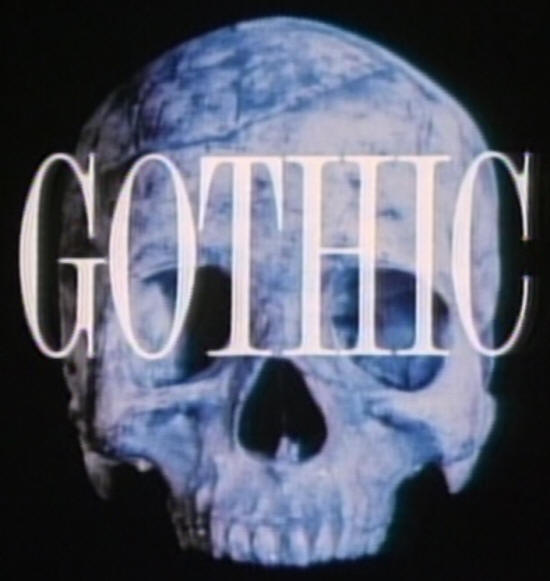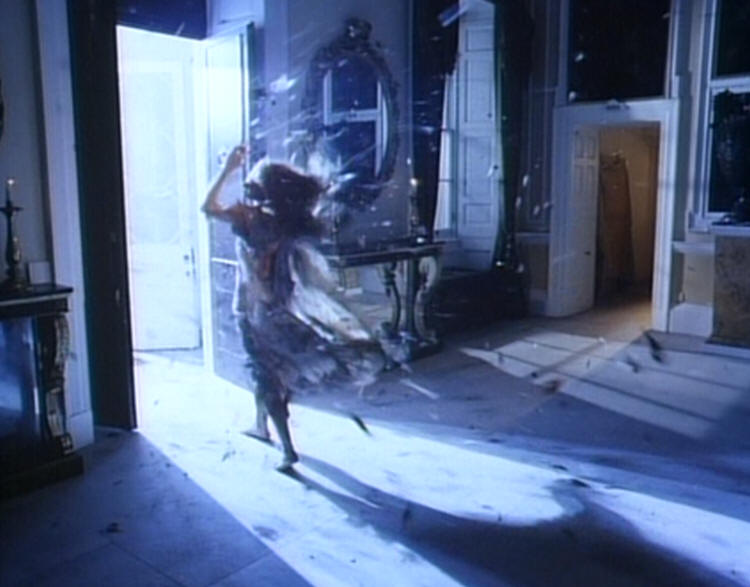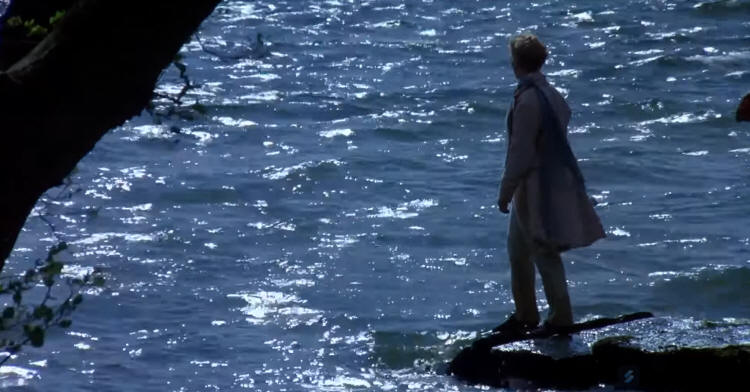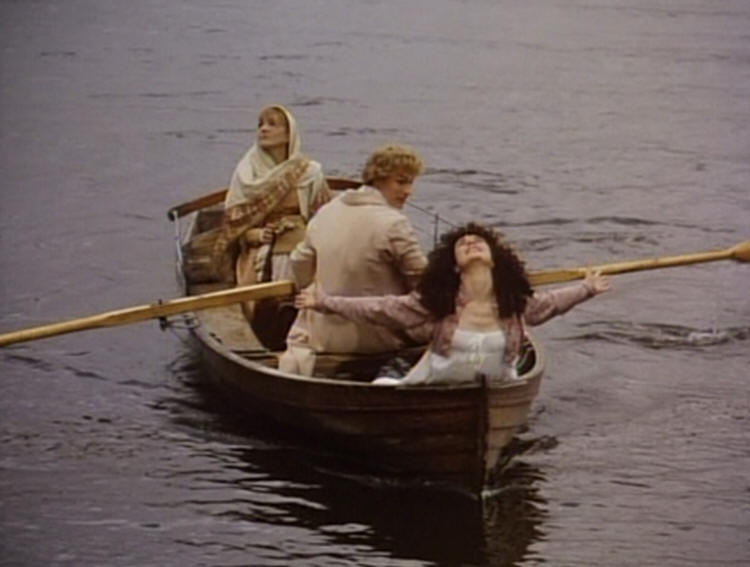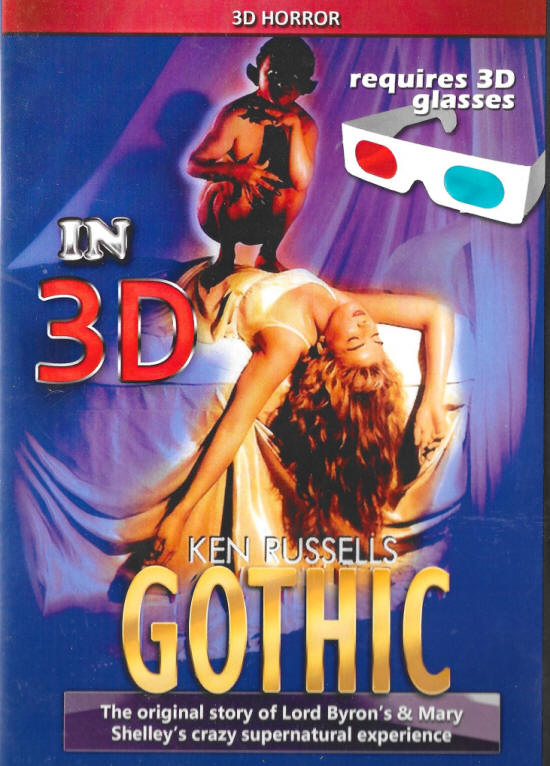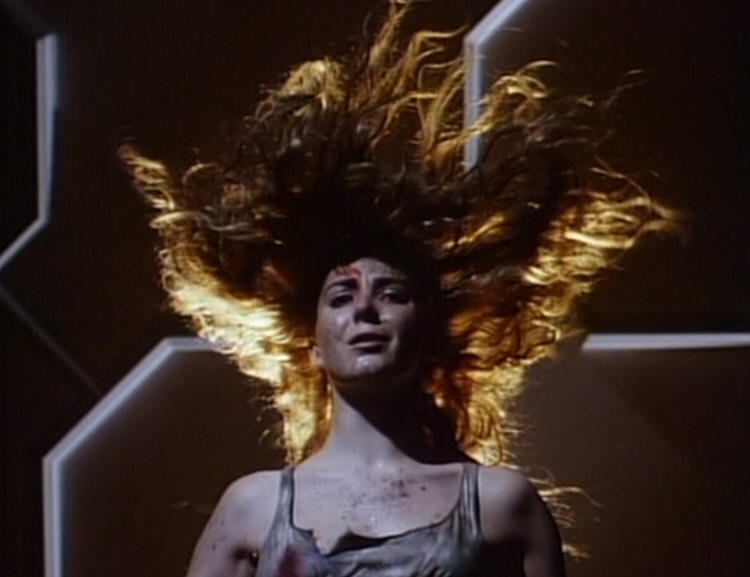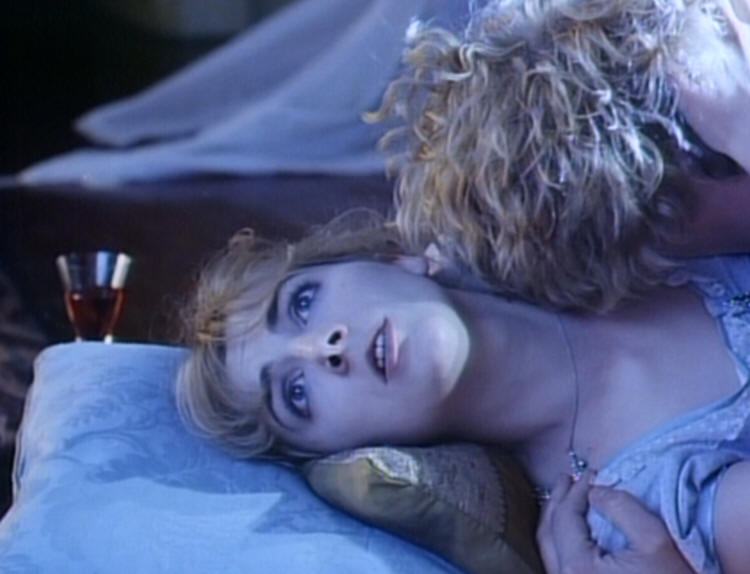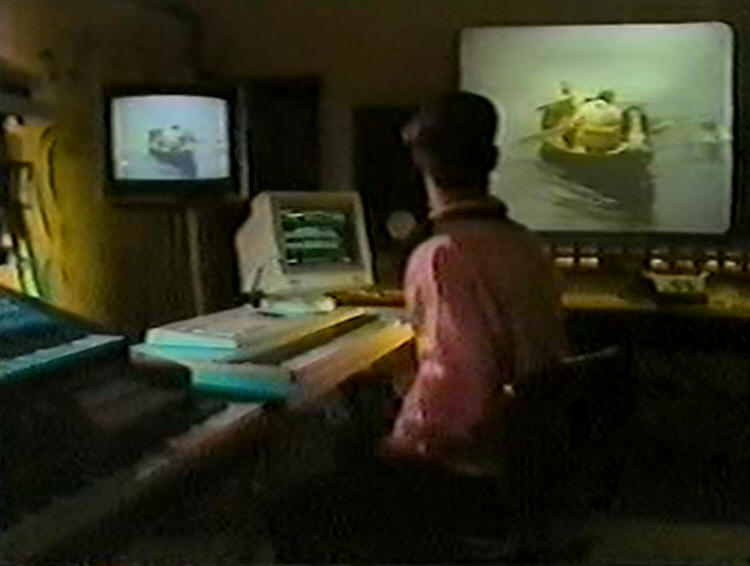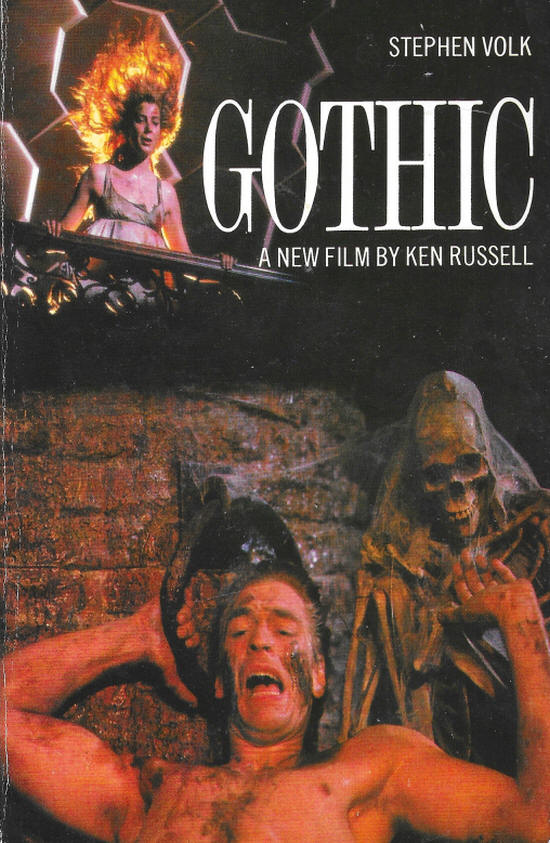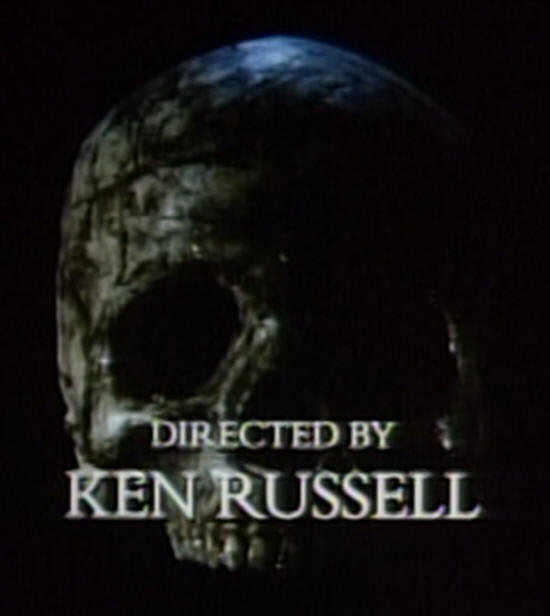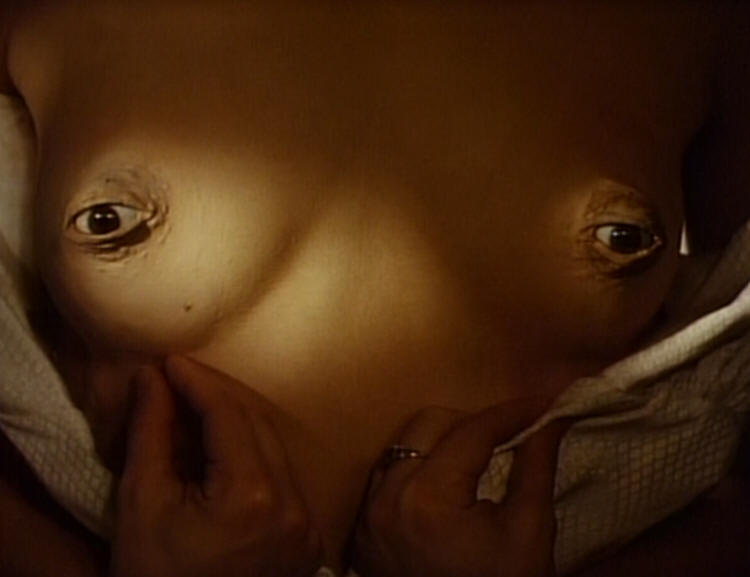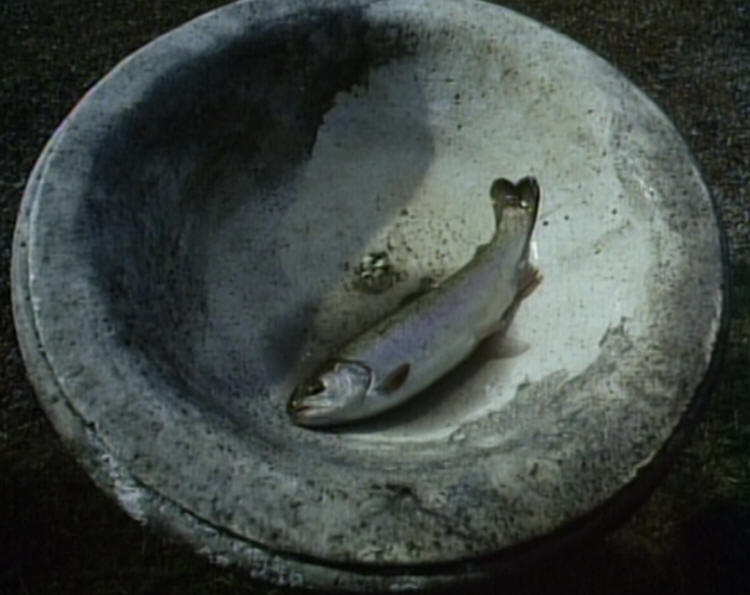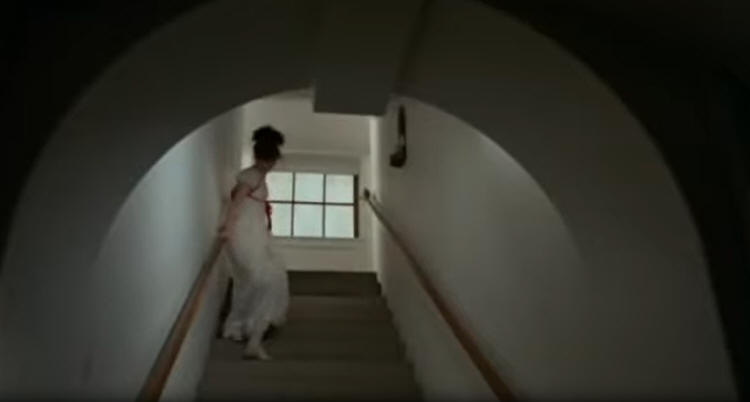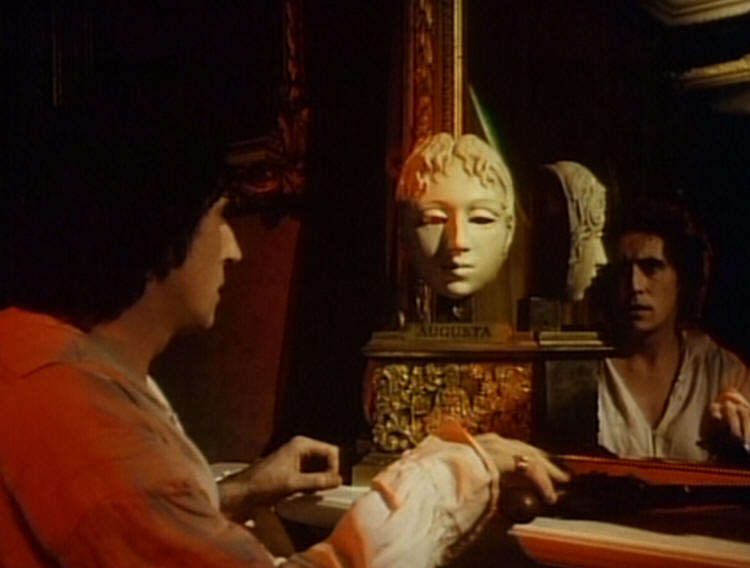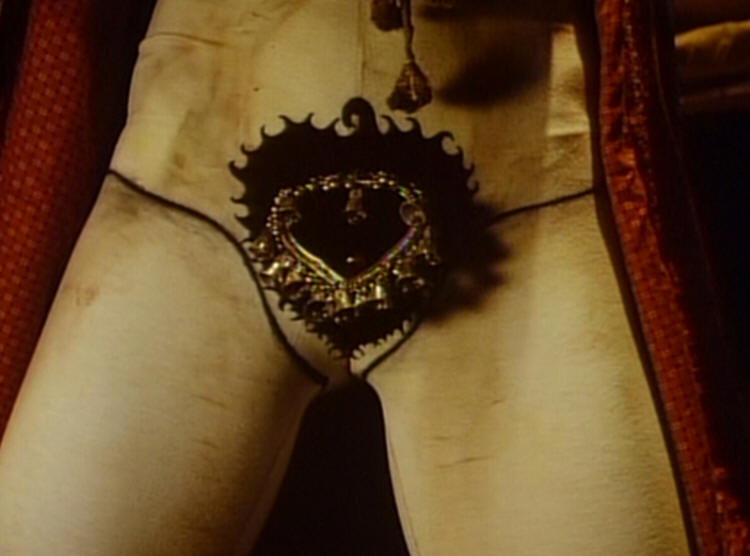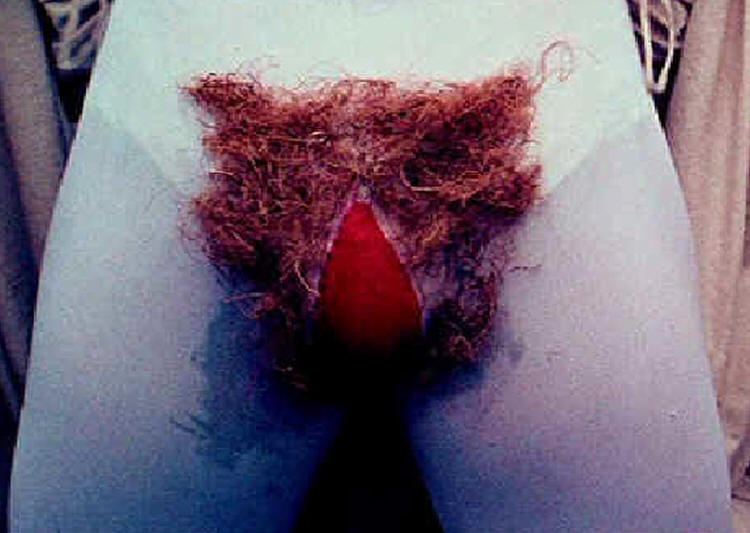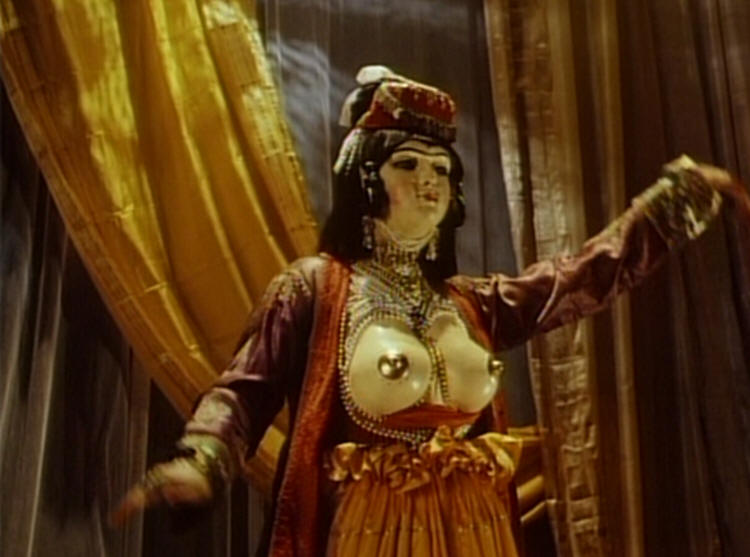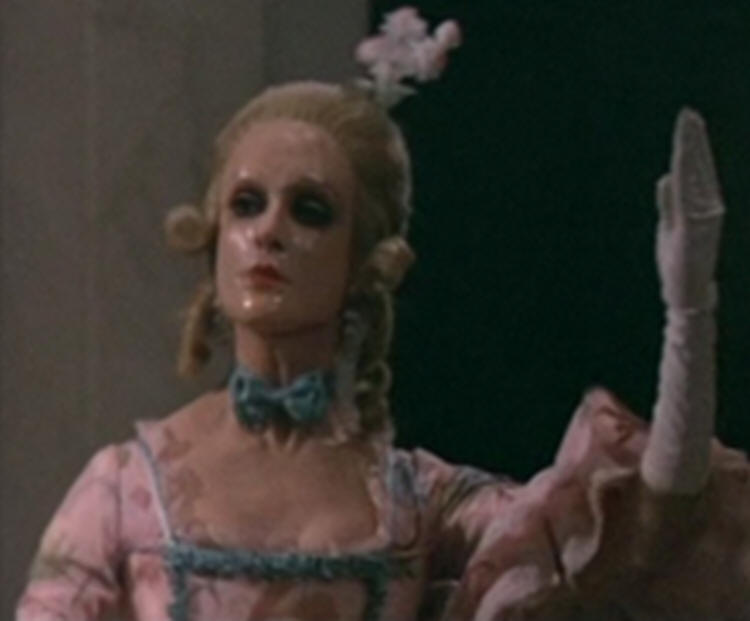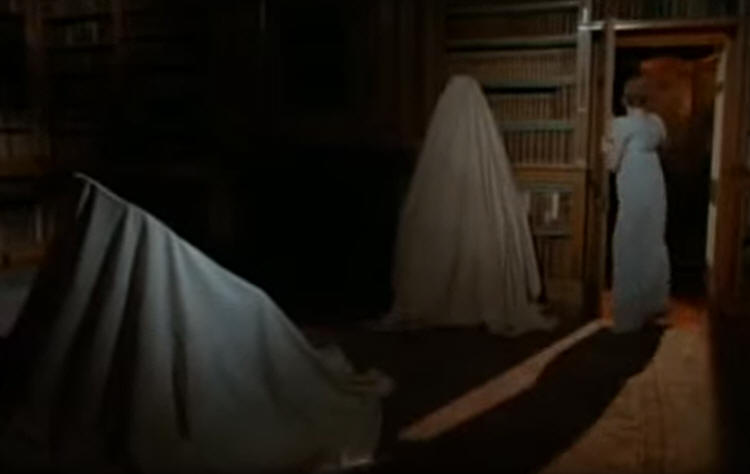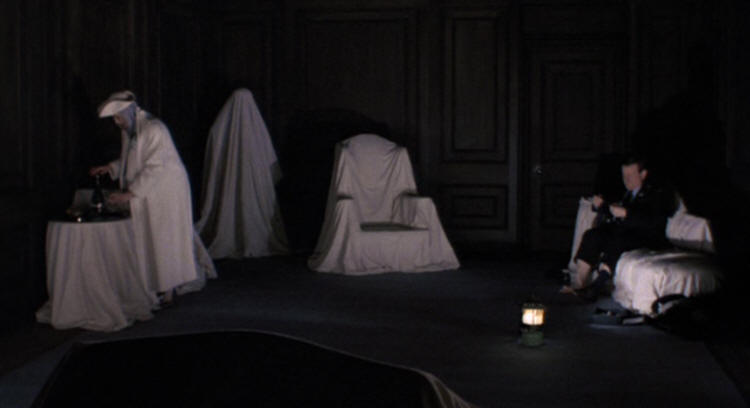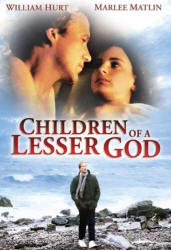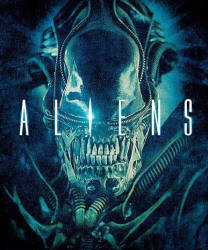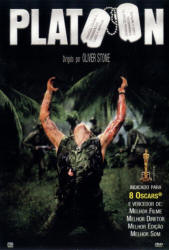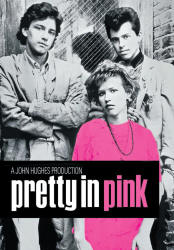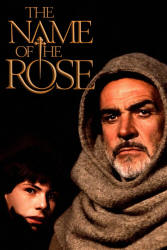|
Gothic from 1986. Ken Russell made a series of very low budget films. They demonstrate the depth of his imagery and vision, and also the desperation of making money by sensation. This period includes a short film, Aria, which is a classic.
Ken Russell was attracted to the story of poets Shelley and Byron in the Villa Diodati overlooking Lake Geneva. This was the meeting where Byron and Shelley, Mary Godwin (his future wife Mary Shelley), Claire Clement (stepsister of Mary and former lover of Byron), and Byron's physician Polidori each agree each to write a ghost story. 'We will each write a ghost story,’ said Byron; and his proposition was acceded to. There were four of us. The noble author began a tale... Shelley… commenced one founded on the experiences of his early life. Poor Polidori had some terrible idea about a skull-headed lady, who was so punished for peeping through a keyhole- what to see I forget… The illustrious poets [Byron and Shelley] also, annoyed by the platitude of prose, speedily relinquished their ungrateful task. I busied myself to think of a story, a story to rival those which had excited us to this task. One that would speak to the mysterious fears of our nature, and awaken thrilling horror- one to make the reader dread to look round, to curdle the blood and quicken the beatings of the heart” (Mary Shelley, letter, Hôtel de Sécheron, Geneva, 17th May 1816). Mary Shelley's story became the novel Frankenstein. The film starts with tourists paying to look through telescopes to the Byron residence across the water. Just as Russell did with Liszt, Shelley and Byron were regarded then as pop stars with adoring groupies. Under the effect of drugs, nightmares start to take over as each character searches for an illusory gratification. Claire however does not need drugs to confront her nightmares.
The poster was banned by London Transport, despite the image being based on a classical painting, Henry Fuseli's The Nightmare.
The film is enjoyable and the first half is vintage Russell but it does deteriorate a bit towards the end. Ken Russell says "I'd fallen into the trap which has been the undoing of many a... pop-video director- punchy, roller-coaster cutting, short sequences and non-stop action... well nigh unbearable over a hundred minutes or so". "The long night that ensues- a bedroom farce played for screams- is scored by a lot of old-fashioned thunder and lightning, plus Thomas Dolby's exceptionally evocative soundtrack music. It makes no more sense than most rock videos, but it's only boring when, every now and then, Mr. Russell and Mr. Volk feel that they have to touch base with the known facts of history" (Vincent Canby, New York Times, 10 April 1987).
Amazingly there is a 3D version of Gothic, not by Ken but digitally created afterwards. "The original story of Lord Byron and Mary Shelley's crazy supernatural experience" says the blurb. It is crudely done and not worth the bother. |
